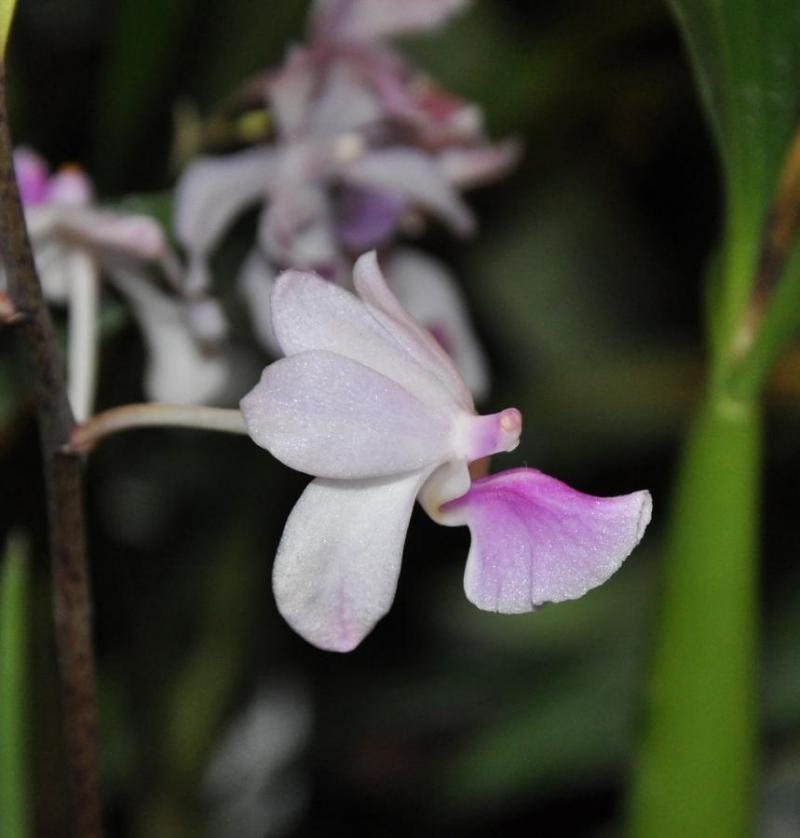Holcoglossum amesianum
Also known as: Ames' Holcoglossum or Vanda amesiana var. alba Vanda amesiana Holcoglossum amesianum f. album in the subfamily: Epidendroideae
Native to: China Myanmar Thailand
General Information
Ames' Holcoglossum is a medium sized monopodial cool to warm growing epiphytic or lithophytic orchid belonging to the sub family Epidendroideae native to China, Myanmar and Thailand. It is named after the American Botanist early in the 1900's.
Plant Description
Monopodial. Grows to 5cm. Each new growth has numerous leaves that grow to 0.5-60cm long
Flowers
Numerous fragrant blossoms appear
Fragrance
The orchid is fragrant.
Care Notes
These orchids have a fine root system that can quickly die back if left dry for too long, but also does not like to be kept wet, so water regularly but ensure that the mix is dry before watering.
Fragrant:- IsFragrant
Climate
Grows at high elevations. Rainfall ranges from 0mm to 284mm per day, heaviest in July and lightest in January. Humidity ranges from 44% to 80%, highest in August and lowest in April. Temperature ranges from 6C to 30C, highest in April (18C to 30C) and lowest in January (6C to 21C).
Fertiliser
Apply liquid based fertiliser per recommended directions. They can benefit from a high phosphate fertiliser leading up to flowering season, followed by a high nitrogen fertiliser when new growth appears, and a balanced fertiliser in other times. These orchids can also tolerate slow release fertiliser applied 1-2 pellets per cup (250ml) of media.
Apply fertiliser regularly at half strength year round. Use a high Nitrogen fertiliser during Spring and Summer. Use a high Phosphorous fertiliser during Summer.Potting
These plants are quite forgiving and will do well repotted ever 2-3 years. The mix should be coarse, well draining, and allow space for air to move and for roots to grow.
Alternatively, these plants will also do well mounted to tree fern or cork slabs, or mounted to trees.
Best time for repotting or mounting the orchids is the end of winter when new growths start to appear. Avoid repotting during hot weather,
This plant does very well in baskets or suspended pots Repotting is best done in a pot the same size or only slightly larger than the previous one.







